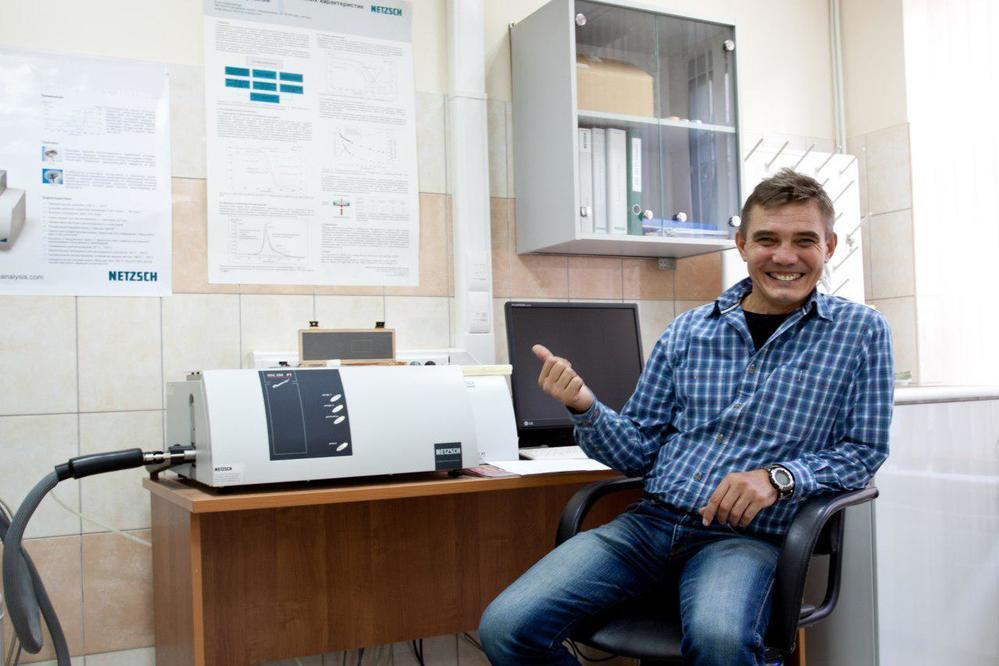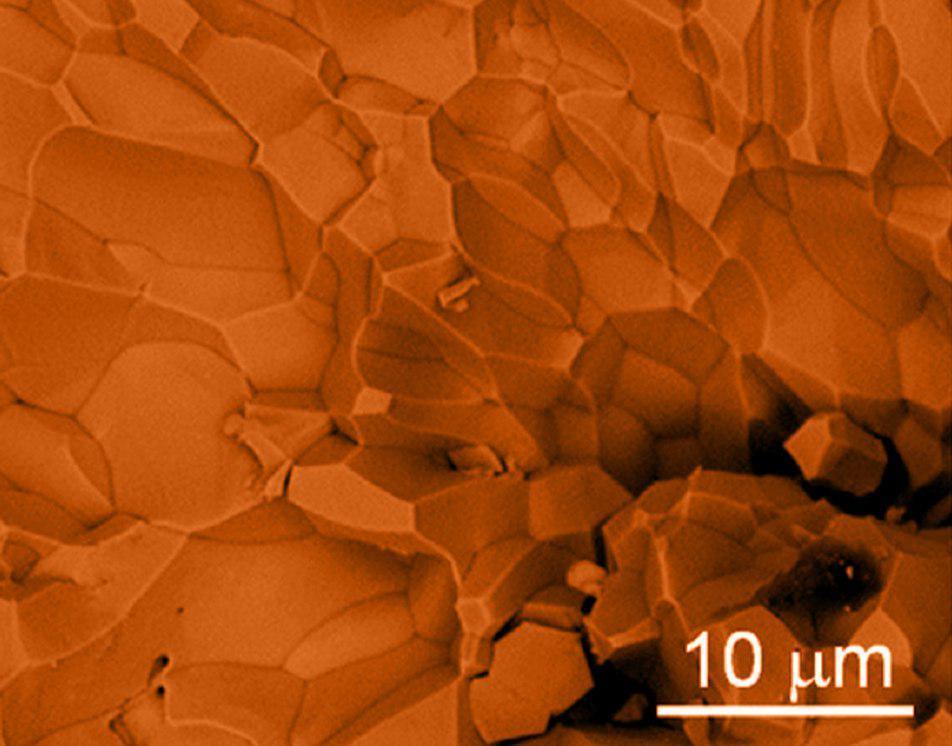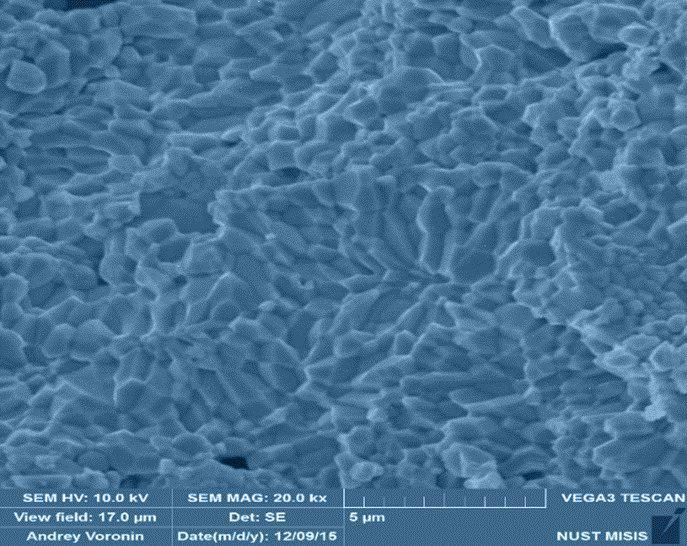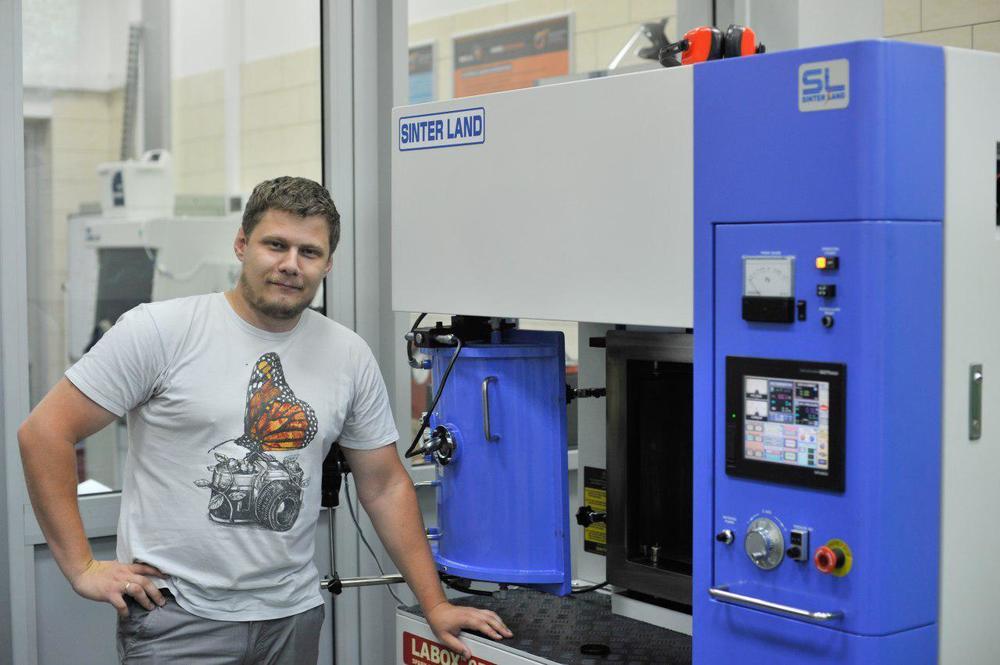An economical method for the rapid synthesis of high-performance thermoelectric materials has been developed at NITU "MISiS"
The staff of the Center for Energy Efficiency NITU "MISiS" have developed an economical and fast way to produce the material from which high-performance thermoelectric generators for spacecraft are made. Such material is able to directly convert thermal energy into electrical energy. The article with the results of work was published in the Journal of Materials Chemistry A.

Head of the Center for Energy Efficiency NITU "MISiS", Doctor of Physics and Mathematics, Professor Vladimir Vasilievich Khovaylo.
The effect of converting thermal energy into electrical energy was discovered in 1821 by the German physicist Thomas Seebeck. However, technologies that allow to use the Seebeck effect on an industrial scale are still far from perfect - mankind is only learning how to create thermoelectric materials, and most of the developments have not yet emerged from the laboratory. However, thermoelectric materials are actively used in energy, refrigeration. Thermoelectric generators working from heat of radioactive decay are installed on such world-famous spacecraft as Cassini, which studies the environs of Saturn, and New Horizon, which surveys Pluto and the Kuiper belt. The electric generator of the rover Curiosity works on the same principle. There are more mundane examples: for example, the generation of electricity from heat transmitted through the elements of the exhaust system of a car. Thermoelectric generators are also being developed that can improve the efficiency of various types of power plants.

Micrograph of CoSb3 crystals with indium inclusions (scale - 10 micrometers)
Created by scientists of NITU "MISiS" material will replenish the line of developments of the university for space.
“We are actively cooperating with representatives of the aviation and space industry, ” said Alevtina Chernikova, rector of NITU “MISiS” . - At the moment, scientists of our university are conducting about thirty research projects commissioned by the aerospace industry. Including with the United Aircraft Corporation, which is interested in implementing a number of university developments to solve the strategic tasks of the corporation. ”
The thermoelectric materials obtained at NITU “MISiS” combine two “types” of atoms: rigidly fixed in the lattice sites, which provides high electrical conductivity, and freely oscillating, which sharply reduces the thermal conductivity, because the atoms weakly associated with the crystal frame effectively dissipate heat. This combination was achieved by creating intermetallic compounds whose crystal structure contains voids. Filling them with "guest" atoms without breaking the crystal lattice, scientists get the necessary combination of properties. The higher the electrical conductivity of the substance obtained and the lower the thermal conductivity, the higher the key parameter of thermoelectric materials - thermoelectric figure of merit.
One of the most promising such materials was scutterudite - cobalt and antimony intermetallic compounds - CoSb3. The maximum quality factor occurs in this material at a temperature difference of 400-500 degrees. For comparison, in the most well-known thermoelectric material - bismuth telluride, the maximum occurs at a temperature difference of 100-150 degrees and reaches the value ZT = 1.2.

Micrograph of CoSb3 crystals with indium inclusions (scale - 5 micrometers)
In order to achieve a high quality factor in the case of an antimony-cobalt system (ZT = 1.4), it is necessary to use rare-earth elements, for example, ytterbium, as an inclusion metal, or to combine two expensive metals at once. A good quality of 1.8 was obtained only by introducing atoms of three different metals into the crystal lattice.
“We managed to solve the problem by using indium as a filler and selecting the initial ratio of metals, which allowed us to synthesize the desired thermoelectric composition in an open reactor ,” says Andrei Voronin, a member of the research team, an employee of the Center for Energy Efficiency, NITU MISiS . “ Thanks to this approach, we were able to carry out the synthesis in an open reactor in just two minutes, followed by annealing of the resulting sample for 5 hours. The combination of the material used and the features of the synthesis process has accelerated the process of creating several dozen times, which also affects the cost of obtaining such materials. At the same time, the obtained values of thermoelectric figure of merit ZT = 1.5 are record highs for skutterudites with one type of "guest" atoms .

Andrei Voronin, a staff member of the Center for Energy Efficiency at NITU “MISiS”, against the background of an electric spark sintering installation
As the authors of the new work say, the previously proposed schemes for obtaining thermoelectric materials were expensive not only because of the metals used. They included a two-week synthesis of the reaction mixture in vacuumized ampoules. To obtain such material in other ways is very difficult due to the fact that antimony is a volatile metal. And during long-term smelting, the evaporation of antimony can lead to the formation of an undesirable by-product — the CoSb2 phase, which has completely useless characteristics from the point of view of thermoelectricity.

Head of the Center for Energy Efficiency NITU "MISiS", Doctor of Physics and Mathematics, Professor Vladimir Vasilievich Khovaylo.
The effect of converting thermal energy into electrical energy was discovered in 1821 by the German physicist Thomas Seebeck. However, technologies that allow to use the Seebeck effect on an industrial scale are still far from perfect - mankind is only learning how to create thermoelectric materials, and most of the developments have not yet emerged from the laboratory. However, thermoelectric materials are actively used in energy, refrigeration. Thermoelectric generators working from heat of radioactive decay are installed on such world-famous spacecraft as Cassini, which studies the environs of Saturn, and New Horizon, which surveys Pluto and the Kuiper belt. The electric generator of the rover Curiosity works on the same principle. There are more mundane examples: for example, the generation of electricity from heat transmitted through the elements of the exhaust system of a car. Thermoelectric generators are also being developed that can improve the efficiency of various types of power plants.

Micrograph of CoSb3 crystals with indium inclusions (scale - 10 micrometers)
Created by scientists of NITU "MISiS" material will replenish the line of developments of the university for space.
“We are actively cooperating with representatives of the aviation and space industry, ” said Alevtina Chernikova, rector of NITU “MISiS” . - At the moment, scientists of our university are conducting about thirty research projects commissioned by the aerospace industry. Including with the United Aircraft Corporation, which is interested in implementing a number of university developments to solve the strategic tasks of the corporation. ”
The thermoelectric materials obtained at NITU “MISiS” combine two “types” of atoms: rigidly fixed in the lattice sites, which provides high electrical conductivity, and freely oscillating, which sharply reduces the thermal conductivity, because the atoms weakly associated with the crystal frame effectively dissipate heat. This combination was achieved by creating intermetallic compounds whose crystal structure contains voids. Filling them with "guest" atoms without breaking the crystal lattice, scientists get the necessary combination of properties. The higher the electrical conductivity of the substance obtained and the lower the thermal conductivity, the higher the key parameter of thermoelectric materials - thermoelectric figure of merit.
One of the most promising such materials was scutterudite - cobalt and antimony intermetallic compounds - CoSb3. The maximum quality factor occurs in this material at a temperature difference of 400-500 degrees. For comparison, in the most well-known thermoelectric material - bismuth telluride, the maximum occurs at a temperature difference of 100-150 degrees and reaches the value ZT = 1.2.

Micrograph of CoSb3 crystals with indium inclusions (scale - 5 micrometers)
In order to achieve a high quality factor in the case of an antimony-cobalt system (ZT = 1.4), it is necessary to use rare-earth elements, for example, ytterbium, as an inclusion metal, or to combine two expensive metals at once. A good quality of 1.8 was obtained only by introducing atoms of three different metals into the crystal lattice.
“We managed to solve the problem by using indium as a filler and selecting the initial ratio of metals, which allowed us to synthesize the desired thermoelectric composition in an open reactor ,” says Andrei Voronin, a member of the research team, an employee of the Center for Energy Efficiency, NITU MISiS . “ Thanks to this approach, we were able to carry out the synthesis in an open reactor in just two minutes, followed by annealing of the resulting sample for 5 hours. The combination of the material used and the features of the synthesis process has accelerated the process of creating several dozen times, which also affects the cost of obtaining such materials. At the same time, the obtained values of thermoelectric figure of merit ZT = 1.5 are record highs for skutterudites with one type of "guest" atoms .

Andrei Voronin, a staff member of the Center for Energy Efficiency at NITU “MISiS”, against the background of an electric spark sintering installation
As the authors of the new work say, the previously proposed schemes for obtaining thermoelectric materials were expensive not only because of the metals used. They included a two-week synthesis of the reaction mixture in vacuumized ampoules. To obtain such material in other ways is very difficult due to the fact that antimony is a volatile metal. And during long-term smelting, the evaporation of antimony can lead to the formation of an undesirable by-product — the CoSb2 phase, which has completely useless characteristics from the point of view of thermoelectricity.
All Articles